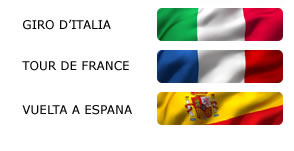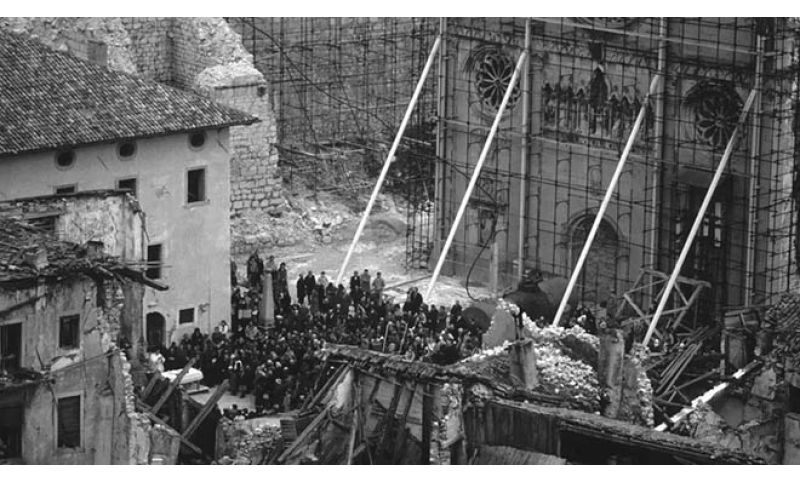

The Giro d'Italia will be decided in Friuli. It will do so on the fiftieth anniversary of its greatest tragedy, the 1976 earthquake, honoring the thousand victims and celebrating the rebirth of a land that, in the meantime, in the second half of this half-century, has been closely linked to the history of the Pink Race, practically being at home in the far Northeast every year.
On May 30, 2026, and the rumors we're hearing are highly reliable, a stage entirely in Friuli will be raced, from Gemona del Friuli to Piancavallo. No, even more, because the mountain above Pordenone, and this is unprecedented, will be climbed twice in the penultimate stage of the Giro for a grand finale that will draw thousands of people above Aviano, who won't want to miss the last fight for the pink jersey in a kind of open-air stadium.
Thousands of people roadside, and the climb is a tough one with its almost 15 km, an average gradient of 7.4% but peaks of 14% in the first part. Technically, it's the perfect climb to attack from far away and gain an advantage in the easier part after the antennas, when the breakaway rider flies with the wind and maybe the riders who dropped back in the most challenging section struggle to chase.
The not-easy descent towards Barcis and Valcellina, already covered by the Giro stage in 2011 - the day after the missed Crostis that headed towards the Vajolet Towers in Trentino - and sadly famous because in those woods the despicable murderer disposed of Giulia Cecchettin's body, could make the finale even more exciting. It's unlikely that the two climbs will be from Barcis, all indications point to the noble slope.
Memory, current events, and a great sporting challenge: the Giro d'Italia does not disappoint. After all, for over a century, it has been accompanying Italy's history.
True, the next edition, number 109, has not yet been presented, but the grand start will once again be from abroad, this time in Bulgaria after the certainly not memorable Albania of last May. Then rumors speak of transfer to Calabria and a first real climb in Abruzzo, the feared Blockhaus.
A return to Naples is expected (a must in the last five years), then a rest day in Tuscany in Viareggio, a Ligurian stage and a single time trial in Piedmont, as usual linked to a famous wine. Then the Alps with a stage in Val d'Aosta perhaps finishing in Cervinia and one in Valtellina.
And then the grand finale. Thrilling for the Northeast. Because on May 29, the third-to-last stage, the Pink Race will inaugurate the tough climb of Pian di Pezzè above Alleghe, an ascent probably preceded by the Passo Fedaia with perhaps the return of the famous and suggestive Serrai, swept away by Storm Vaia and rebuilt after laborious and costly years of work. A Dolomite stage, therefore, before the grand finale as an aperitif to the final parade that will once again be in Rome.
Why Piancavallo and not, for example, Zoncolan, much anticipated and missing from the Giro map since the 2021 edition, post-Covid, and even, regarding its most famous Ovaro slope, since Froome's ride in 2018? Quickly said: the Kaiser is scary, it's a victim of its own fame. Putting it in the final stage would mean risking paralyzing the group, waiting for three weeks for the most feared climb. A bit like what happened with the Lussari time trial in 2023. Mauro Vegni, a long-time friend of Friuli and in his last dance as race director (he's designing it, but in May he won't be at the helm), has opted for a more "soft" solution.
Paolo Urbani, the organizer of the Friuli stages in FVG, the heir to Enzo Cainero - who always works in synergy with the regional presidency, and particularly with the governor's spokesperson Massimiliano Fedriga, Edoardo Petiziol - besides ensuring an unforgettable start from Gemona, moreover from the Goi-Pantanali Alpine barracks, the site of one of the symbolic tragedies of the earthquake and restored by the Region precisely for the fifty-year anniversary of the tremors, has obtained a stage that symbolically crosses the crater of that tragedy. Buja, Majano, Colloredo di Monte Albano, perhaps Forgaria, Clauzetto, the Pordenone mountain before Piancavallo. And he has obtained the double climb of the mountain that was Pantani's in 1998, quite a theatrical coup.
He, Urbani, says he doesn't comment on rumors. But in this case too, the English saying applies: follow the money. The Region pays half, the rest are sponsors, more than 500 thousand euros, but then ensures funding for road maintenance and resurfacing, a kind of Giro legacy on the territory. Just read the funding for FVG Strade and the two Edr, total 14.7 million, and practically the stage route is done. Enjoy.
from Messaggero Veneto

